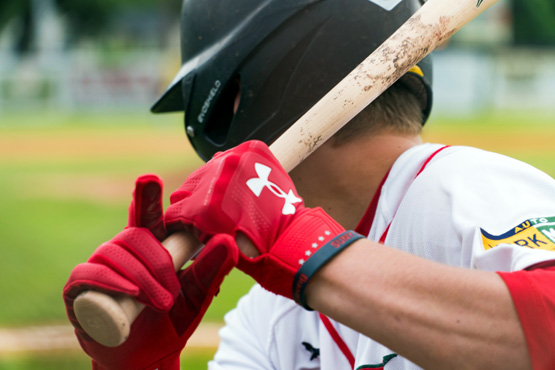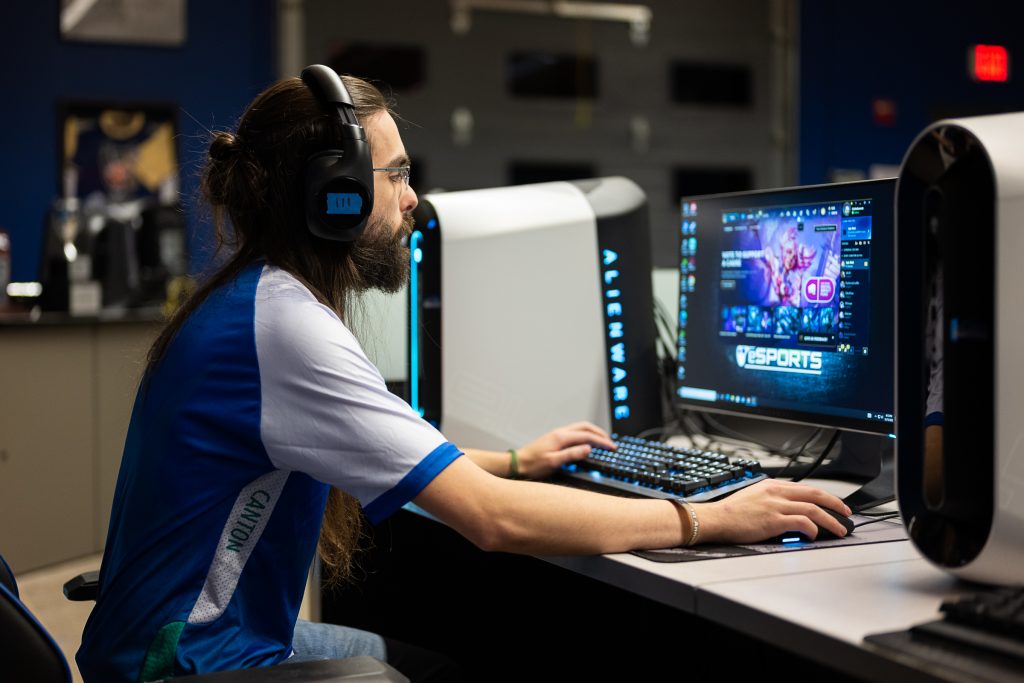By David Volz
Campus News
The world of college sports is very competitive and requires that young people commit to physical practices and games so they can achieve high level results. In addition to pursuing athletic success, the college athlete is expected to do well in various high level courses.
Some young people have achieved great success on the high school playing field or court but may not have gained the attention of a Division I team’s scouts or assistant coaches. Or they have gotten an offer or two from a four year university but they want to be on team where they can have extensive playing time. In some sports, such as baseball, a top high prospect might want to play a year or two at the junior college and then sign with a Major League Baseball program. Other athletes may be struggling with their academic work and need to spend a year or two improving their grades. If they achieve more success in the classroom, they can receive a scholarship to play at a large four year university. Many of the players on junior college teams are as talented as those playing for larger more well-known university teams.

Roy Allen, sports information director at Southwestern State College in Fort Myers, Florida has seen many athletes blossom after two years on one of the school’s teams. The college offers baseball, softball, men’s and women’s basketball and volleyball.
“We are a young athletic department, but we have some very good teams,” said Allen. “Our softball team has won a national championship and is highly ranked. We have had four baseball players drafted in the top rounds of the major league, the most except for Florida State University and the University of Florida and more than the University of Miami.”
A selling point for playing for Southwestern State or other junior college teams is that if you play for a four-year university, you can’t get drafted by a major league team until after the third year on the team while at a two year college you can drafted after only two years.
Another advantage is the scholarship situation. Most four-year universities only have around 12 scholarships that must be divided among 25 to 30 players. This means that most players are getting about 30 to 40 percent of the expenses paid through a baseball scholarship. “We can give 24 scholarships and so we are in a situation where we can give 19 full scholarships. We have an opportunity to give our players more money,” said Allen.
For someone who wants a career in basketball or volleyball, a junior college can offer valuable playing time opportunities. Allen has seen players who know they have some athletic talent but may not have received attention in high school come to a two year college, gain some playing time at a more competitive level and then get an offer to a major college program.
“A player in Orlando may think he is a power five basketball player and should play at Florida but he may not get an offer from such a school. But if they play two years at a junior college, they can eventually play at their dream school,” said Allen. He said that over the past two years, 21 players have gone on to play at the division one level. “We send players to every level from schools like Georgia and Alabama to division 2 schools.”
Volleyball players also enjoy many advantages at playing at two year colleges. “We have very talented volleyball players who have developed academically and athletically and gone on to play for four year universities. They can get a good academic start at Southwestern. They are not sitting in classes of 250 students, they are in classes of about 30 students. They can get more individual attention from faculty and advisors here,” said Allen.
Also, many players from abroad come to colleges like Southwestern to play a sport, gain experience and then eventually transfer to a four year university. They are usually very talented and make a strong contribution to their team.
For someone who wants a career in basketball or volleyball, a junior college can offer valuable playing time opportunities. Allen has seen players who know they have some athletic talent but may not have received attention in high school come to a two year college, gain some playing time at a more competitive level and then get an offer to a major college program.
“A player in Orlando may think he is a power five basketball player and should play at Florida but he may not get an offer from such a school. But if they play two years at a junior college, they can eventually play at their dream school,” said Allen. He said that over the past two years, 21 players have gone on to play at the division one level. “We send players to every level from schools like Georgia and Alabama to division 2 schools.”
Volleyball players also enjoy many advantages at playing at two-year colleges. “We have very talented volleyball players who have developed academically and athletically and gone on to play for four year universities. They can get a good academic start at Southwestern. They are not sitting in classes of 250 students, they are in classes of about 30 students. They can get more individual attention from faculty and advisors here,” said Allen.
Also, many players from abroad come to colleges like Southwestern to play a sport, gain experience and then eventually transfer to a four-year university. They are usually very talented and make a strong contribution to their team.
Gulf Coast State College in Panama City also offers a strong athletic program. It includes many very high-level athletes who are hoping to achieve success in division one or professional athletics.
“We have talented athletes who may have been overlooked or want to stay closer to home,” said Mike Kandler, athletic director. “They play here for two years and move on to division one or two programs. Some players don’t have as much size or strength. Some are fantastic players but faced academic difficulties.”
Gulf Coast has produced many successful teams over the years. The college has won six national basketball championships and the men’s team has won at the regional level. The college can offer more scholarship money and means athletes can save money will developing athletic and academic skills. “We have had a bunch of success in our program,” said Kandler.
The athletes are Gulf Coast are recruited. Scouts and assistant coaches go to high school game and look for players who might contribute to their teams. The players are offered scholarships and must succeed on the field or court and in the classroom.
Indian River State College in Fort Pierce, Florida also offers a wide array of successful athletic teams.
The Indian River men’s and women’s swimming and diving teams defended a streak of national championships by winning the 2022 NJCAA Championships in Fort Piece. This is the 48th and 44th championships won the men women respectively. Gina Miller was awarded the women’s swimmer of the year and Madison Price earned women’s diver of the year. Miller broke two NJCAA national records in the 500- and 1000-yard freestyle. Sion Brinn won Women’s swimming coach of the year and David Suba received Diving Coach of the Year.
“We have a top swimming program at Indian River, and we have a very good athletic and academic program,” said Athletic Director Scott Kimmelman. “We offer an opportunity for young people to play intercollegiate sports and get an education.”





Facebook Comments